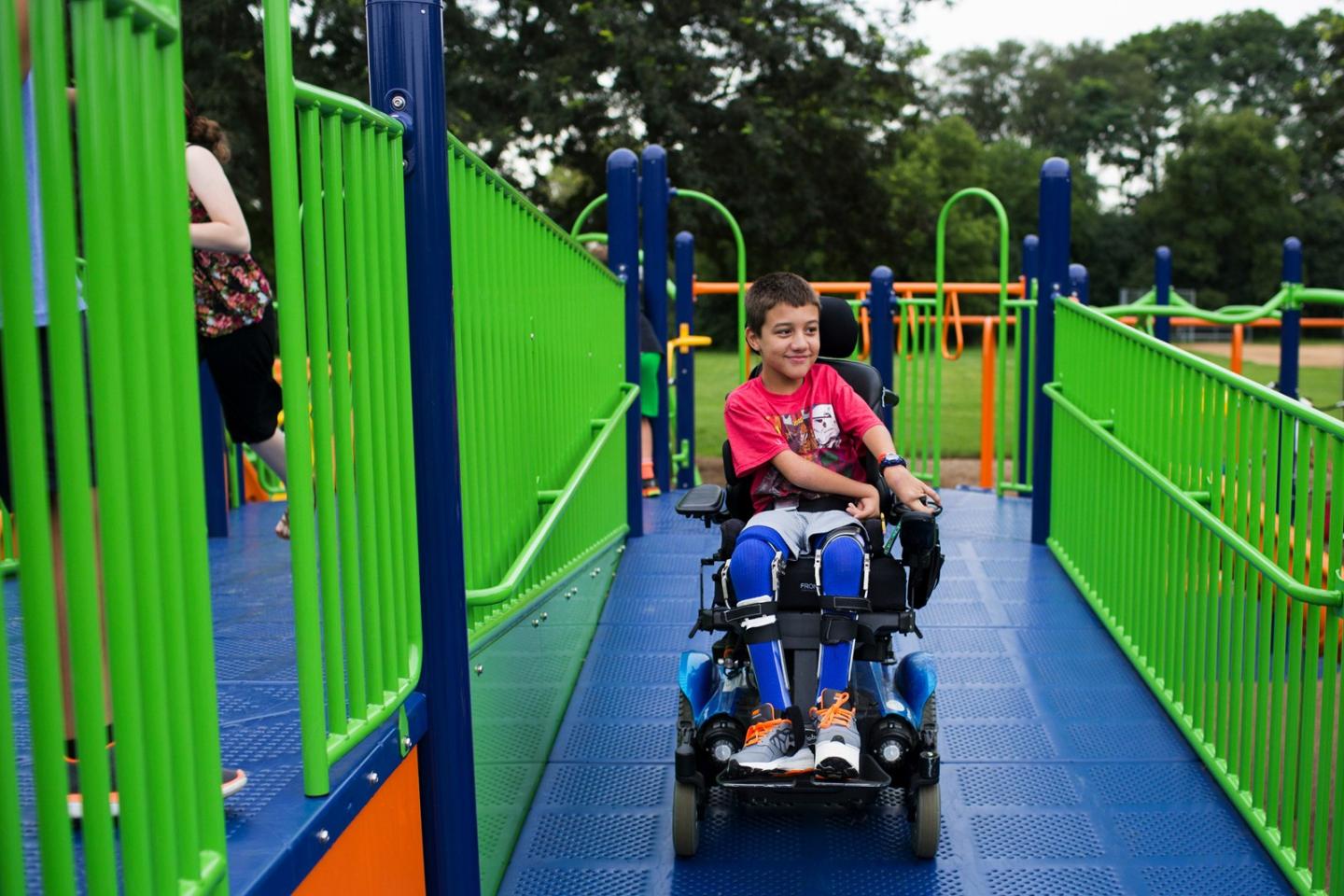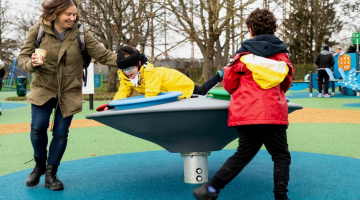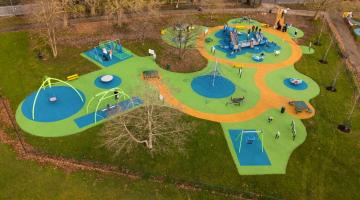The Importance of Inclusive and Accessible Parks

To celebrate Love Parks week, we are exploring the significance of parks and the steps we can take to make our playgrounds more inclusive. The social, mental, and physical benefits of being in green spaces are endless, yet we must strive to make these spaces accessible to everyone.
The Benefits of Being Outdoors
There are countless benefits of being outdoors, especially for disabled children. Outdoor environments enhance children's learning and wellbeing, providing opportunities for them to meet peers with similar experiences and foster friendships. These spaces are key in helping children understand the world around them, while also bringing communities together and promoting a sense of belonging. Playgrounds offer interactive family time, boost self-esteem and confidence, promote physical activity and exercise, and help reduce isolation.

The Current Pitfalls
The core issues surrounding inaccessible parks are outlined in SCOPE’s 2021 campaign ‘Lets Play Fair’:
- Inaccessibility: Only 1 in 10 playgrounds are inclusive to disabled or SEND children, stopping them from having fun and friendship
- Limited Integration: Nearly three-quarters of playgrounds do not facilitate joint play between disabled and non-disabled children
- Falling Short: Many parks aim to be accessible but lots fall short of being fully inclusive and do not offer the same level of fun and engagement to all
We Want to See:
To make playgrounds truly inclusive, the following elements are crucial:
- Accessible equipment
- Sensory Opportunities
- Appropriate Surfaces and Fences
Changemakers
A prime example of a successful inclusive playground is Fair Play in Barnet, London. Opened in February, this playground sets a precedent. One of the founders, Deborah Grundle, told the eJP that the playground was designed to be a model for other councils and public landscape developers. She goes on to say that inclusive play will reduce stigma through positive experiences in a society where social integration and physical fitness are important to all.

How can you make change?
Creating change involves more than just removing barriers. It’s about integrating opportunities for all children to play together. Here's how you can contribute:
- Influence Your Local Council: Advocate for inclusive playgrounds in your community.
- Designing Play-for-All Playgrounds: Ensure playgrounds cater to all users, making everyone feel valued.
Essential Features of Inclusive Playgrounds:
- Sensory-Rich Details: Activities engaging multiple senses.
- Fencing: Safe, contained areas.
- Zones: Grouping similar equipment to encourage diverse engagement.
- Multiple Challenge Levels: Gradual increases in activity difficulty.
- Routes and Maneuverability: Wide travel routes for mobility.
- Unitary Surfacing: Shock-absorbing surfaces for wheelchair accessibility.
Where to go?
Explore accessible parks across the UK using SCOPE's Playground Accessibility Map.
By making our parks and playgrounds inclusive, we ensure that all children can enjoy the benefits of outdoor play. Let’s work together to create spaces where everyone can thrive.